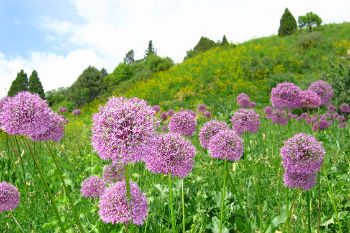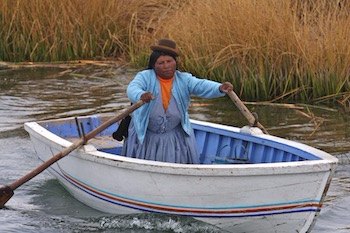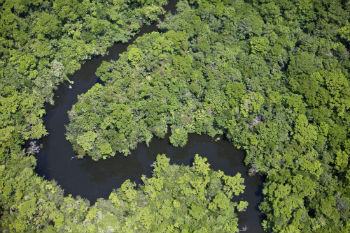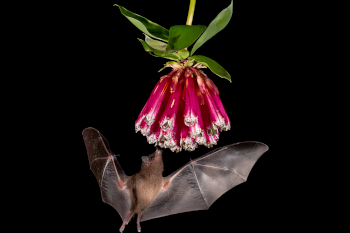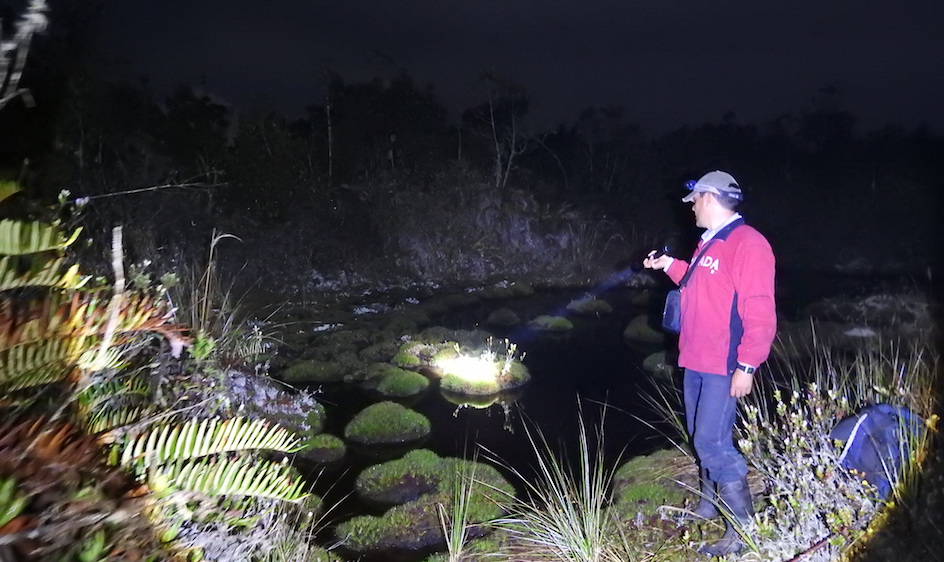Main menu
CEPF is a joint initiative of l’Agence Française de Développement, Conservation International, the European Union, Fondation Hans Wilsdorf, the Global Environment Facility, the Government of Canada, the Government of Japan and the World Bank. A fundamental goal is to ensure civil society is engaged in biodiversity conservation.
Visitez le site français コア情報の日本語翻訳を読むOr use Google Translate to translate the English site to your language:
GTranslate
In Search of An Endangered Frog in Bolivia
By: Marsea Nelson, CEPF Senior Communications Manager
20 March 2017
20 March 2017
CEPF grantee BIOTA (Centro de Estudios en Biología Teórica y Aplicada) combed the Bolivian montane forests of Cotapata National Park and those near the town of Coroico in search of theYunganastes bisignatus, a small endemic frog listed as Endangered on the IUCN Red List. The species hadn't been seen in the wild since 2006, so BIOTA wanted to confirm its presence. Did they find it?
“Yes!” said BIOTA’s Sol Aguilar. “And we are very happy for that.”
Seven calls were recorded in Cotapata Key Biodiversity Area which, as a national park, is well protected. One frog was also recorded near Coroico, the first known recording in that area.
The three herpetologists (James Aparicio, Mauricio Ocampo and Luis Fernando Pacheco) who—with the help of students—led the search, covered 700 meters in altitude and gradient.
Pressure has been put on the species, and others, as a result of the conversion of forested mountain slopes by local communities into coca leave crops. While the sale of coca leaves has been profitable, the communities have realized the effects that farming has had on the local biodiversity, and on the quantity and quality of their own water supply.
“They see that they’ve changed the environment. That they don’t have as many species as they used to, particularly amphibians, and that they have more invasive species,” said Aguilar, who assisted with efforts to liase with and educate the local communites. “They’ve recognized that [farming as they have] is not sustainable.”
The nearby city of La Paz also depends on the montane forests for its water supply and has seen a worrisome decline in rainfall. “It’s really important to work with the communities [in the mountains] and strengthen their capacity to understand that what they are doing right now affects not only them, but also the people who live in the surrounding area,” Aguilar said.
In response, some of the communities are developing rules for water management and creating new protected areas. Efforts like this will help ensure the success of the people and biodiversity that depend on Bolivia’s montane forests.
